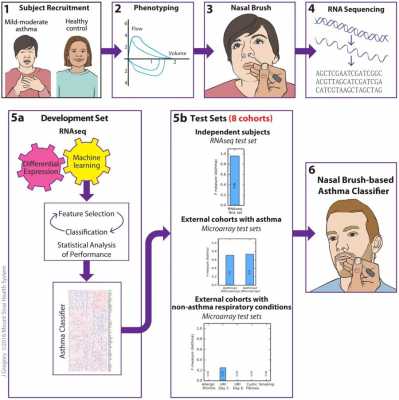Author Interviews, Cancer Research, Genetic Research, Nature, Prostate Cancer / 13.06.2018
Genetic Variants Help Identify Men At Highest Risk of Prostate Cancer
MedicalResearch.com Interview with:
Fredrick R. Schumacher, PhD, MPH.
Associate Professor, Department of Population & Quantitative Health Sciences
Case Western Reserve University
Cleveland
MedicalResearch.com: What is the background for this study? What are the main findings?
Response: Our study examines the genetic underpinnings of prostate cancer initiation using technology to test variants across the genome. Our study focused on men of European ancestry and included over 80,000 men with prostate cancer and 60,000 men without disease. We discovered 63 novel genetic variants associated with prostate cancer risk, which increases our knowledge of prostate cancer genetic risk factors by more than 60%.
A genetic risk score created from the combination of 163 new and known prostate cancer risk variants revealed men with the highest genetic risk score are nearly seven times more likely to develop disease compared to the average man. Additionally, men with the lowest genetic risk score have a 85% risk reduction of developing prostate cancer compared to the average. Lastly, these new discoveries uncover several biological mechanisms involved in the initiation of prostate cancer.
(more…)






 Naoto Tada Ueno, M.D., Ph.D., F.A.C.P.
Executive Director, Morgan Welch Inflammatory Breast Cancer Research Program and Clinic
Section Chief, Section of Translational Breast Cancer Research, Department of Breast Medical Oncology
Division of Cancer Medicine
The University of Texas MD Anderson Cancer Center
Houston, TX
MedicalResearch.com: What is the background for this study? What are the main findings?
Response: The best outcome of inflammatory breast cancer (IBC) is dependent on achieving a pathological completed response after neoadjuvant chemotherapy for primary inflammatory breast cancer, which is the most aggressive type of breast cancer.
We have conducted extensive preclinical work, which showed that EGFR is a potential therapeutic targets of IBC.
Based on this preclinical data, we have conducted a phase II study to determine the pathological complete response rate of panitumumab plus neoadjuvant chemotherapy for HER2 negative primary inflammatory breast cancer.
Naoto Tada Ueno, M.D., Ph.D., F.A.C.P.
Executive Director, Morgan Welch Inflammatory Breast Cancer Research Program and Clinic
Section Chief, Section of Translational Breast Cancer Research, Department of Breast Medical Oncology
Division of Cancer Medicine
The University of Texas MD Anderson Cancer Center
Houston, TX
MedicalResearch.com: What is the background for this study? What are the main findings?
Response: The best outcome of inflammatory breast cancer (IBC) is dependent on achieving a pathological completed response after neoadjuvant chemotherapy for primary inflammatory breast cancer, which is the most aggressive type of breast cancer.
We have conducted extensive preclinical work, which showed that EGFR is a potential therapeutic targets of IBC.
Based on this preclinical data, we have conducted a phase II study to determine the pathological complete response rate of panitumumab plus neoadjuvant chemotherapy for HER2 negative primary inflammatory breast cancer.  Ali Khashan, PhD
Senior Lecturer in Epidemiology
School of Public Health & INFANT Centre
University College Cork
Cork, Ireland
MedicalResearch.com: What is the background for this study? What are the main findings?
Response: There is some evidence to suggest an increased likelihood of neurodevelopmental disorders in relation to hypertensive disorders in pregnancy, however consensus is lacking. Considering hypertensive disorders in pregnancy are among the most common prenatal complication, we decided to synthesise the published literature on this topic by conducting a comprehensive systematic review and meta-analysis.
Our main findings suggest that hypertensive disorders in pregnancy are associated with about 30% increase in the likelihood of autism spectrum disorders (ASD) and ADHD in the offspring, compared to offspring not exposed to hypertensive disorders in pregnancy.
Ali Khashan, PhD
Senior Lecturer in Epidemiology
School of Public Health & INFANT Centre
University College Cork
Cork, Ireland
MedicalResearch.com: What is the background for this study? What are the main findings?
Response: There is some evidence to suggest an increased likelihood of neurodevelopmental disorders in relation to hypertensive disorders in pregnancy, however consensus is lacking. Considering hypertensive disorders in pregnancy are among the most common prenatal complication, we decided to synthesise the published literature on this topic by conducting a comprehensive systematic review and meta-analysis.
Our main findings suggest that hypertensive disorders in pregnancy are associated with about 30% increase in the likelihood of autism spectrum disorders (ASD) and ADHD in the offspring, compared to offspring not exposed to hypertensive disorders in pregnancy.  Rebecca Ivy Hartman, M.D
Instructor in Dermatology
Brigham and Women's Hospital
Boston MA 02115
MedicalResearch.com: What is the background for this study? What are the main findings?
Response: Organ transplant recipients (OTR) are at 100-fold higher risk to develop certain skin cancers compared to the general population due to immunosuppression, and thus preventing skin cancer in this population is critical.
Our study found that in a high-risk Australian OTR population, only half of patients practiced multiple measures of sun protection regularly.
However, after participating in a research study that required dermatology visits, patients were over 4-times more likely to report using multiple measures of sun protection regularly. Patients were more likely to have a positive behavioral change if they did not already undergo annual skin cancer screening prior to study participation.
Rebecca Ivy Hartman, M.D
Instructor in Dermatology
Brigham and Women's Hospital
Boston MA 02115
MedicalResearch.com: What is the background for this study? What are the main findings?
Response: Organ transplant recipients (OTR) are at 100-fold higher risk to develop certain skin cancers compared to the general population due to immunosuppression, and thus preventing skin cancer in this population is critical.
Our study found that in a high-risk Australian OTR population, only half of patients practiced multiple measures of sun protection regularly.
However, after participating in a research study that required dermatology visits, patients were over 4-times more likely to report using multiple measures of sun protection regularly. Patients were more likely to have a positive behavioral change if they did not already undergo annual skin cancer screening prior to study participation.